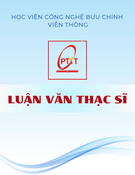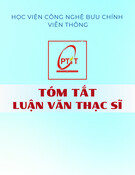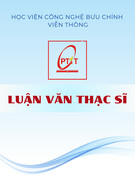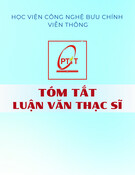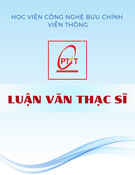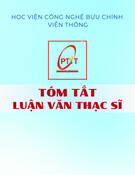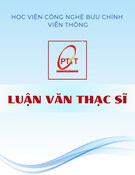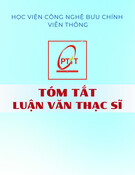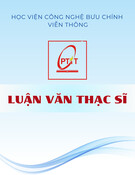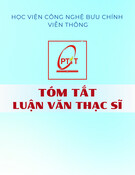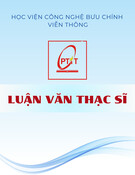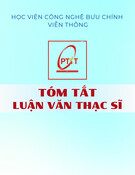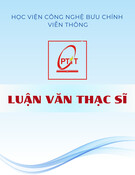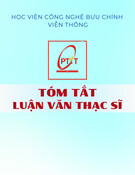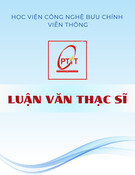
Vol II
Heaven, as it is on Earth:
Representations of literary heavens in contemporary
literature, with a focus on Alice Sebold’s The Lovely Bones
A thesis submitted in fulfilment of the requirements
for the degree of Master of Arts
Samantha Tidy
B.A., Grad. Dip Ed.
School of Creative Media
Portfolio of Design and Social Context
RMIT University
January 2009

2
Declaration
I certify that except where due acknowledgement has been made, the work is that
of the candidate alone; the work has not been submitted previously, in whole or in
part, to qualify for any other academic award; the content of the thesis is the result
of work which has been carried out since the official commencement date of the
approved research program; any editorial work, paid or unpaid, carried out by a
third party is acknowledged; and, ethics procedures and guidelines have been
followed.
Samantha Tidy
25th January 2009

3
Contents Page
Introduction 4
Abstract
Exegesis Outline
Definitions
Literature Review 9
Context Review 15
Chapter One 21
Heaven as a human creation – personalised heavens in contemporary literature:
other examples that demonstrate this growing trend.
Figure 1. Taxonomy of personalised heavens in a sample of contemporary 29
literature.
Chapter Two 31
Heaven’s origins – Where do authors get their idea of heaven? Religious, literary and
cultural foundations for creating literary heavens
Chapter Three 37
Earthly comforts and high school dreams – The literary heaven depicted in Sebold‟s
The Lovely Bones and its narrative effect
Chapter Four 49
The ways in which Alice Sebold‟s The Lovely Bones both supports and challenges
Daemmrich‟s theories on literary representations of paradise
Conclusions 66
Appendix A – Heaven as it is depicted in the five main most popular
religions of the world 71
Bibliography 80

4
Introduction
Abstract
This exegesis examines the landscape of heaven depicted in the contemporary novel, The Lovely
Bones by Alice Sebold. I examine the various characteristics of the heaven (or „afterlife‟)
depicted in Sebold‟s novel, with the aim of ascertaining the effects of using this as a narrative
device.
Using Ingrid Daemmrich‟s analysis of the paradisiacal motif in literature as a framework,1 I
reveal characteristics in The Lovely Bones that are both consistent with and challenge traditional
literary representations of heaven and which therefore demonstrate that the text utilises the
established literary motif of heaven for symbolism and meaning, but in a contemporary context.
I explore the growing trend of contemporary literary heavens by reviewing two other literary
heavens that are relevant to this scholarship. I examine where as writers and readers, we
ascertain our concept of heaven (in society‟s religious foundations and from prior literature),
and for the relevance of the key text, I briefly discuss the author‟s likely cultural influences.
Having established the novel‟s lack of alignment with a religious version of heaven, I then
examine the nature of and the narrative effect of, the personalised heaven depicted in the novel,
The Lovely Bones.
In doing so, I explore one of the new portraits of heaven in literature, an example which
represents a growing trend away from portraying a classic edenic heaven shared by all humanity
(and traditional to literary representations of heaven), toward a contemporary, personalised
1 Daemmrich, I 1997, Studies on Themes and Motifs in Literature: Enigmatic Bliss, The
Paradise Motif in Literature, Peter Lang, New York.

5
heaven that seeks to meet the wants and desires of the individual in our modern society. With
reference to literature‟s ability to reflect back to us, our society‟s beliefs and values, I examine
what this new portrait of heaven reveals about society.
Exegesis Outline
The trend of personalised heavens and the larger cultural and literary context
I will explore the growing trend of contemporary literary heavens by reviewing two other
literary heavens that are relevant to this scholarship. I will then examine where as writers and
readers, we ascertain our concept of heaven (in society‟s religious foundations and from prior
literature), and for the relevance of the key text, I will briefly discuss the author‟s likely cultural
influences. Having established the novel‟s lack of alignment with a religious version of heaven,
I will then examine the nature of the personalised heaven depicted in the novel, The Lovely
Bones.
Sebold’s diversion from and affirmation of key scholar’s theories
Using Daemmrich‟s framework for the features of paradisiacal landscapes, I will then reveal
characteristics in The Lovely Bones that are both consistent with and challenge traditional
literary representations of heaven and which therefore demonstrate that the text utilises the
established literary motif of heaven for symbolism and meaning, but in a contemporary context.
The changing literary landscapes reveal eschatological evolution
With reference to the nature of literary heavens as depicted in non-contemporary texts (using
Ingrid Daemmrich‟s research), and the new literary depictions of heaven in The Lovely Bones
and other texts explored in chapter one, I will demonstrate that the influence of religion is





![Luận văn Thạc sĩ: Tổng hợp và đánh giá hoạt tính chống ung thư của hợp phần lai tetrahydro-beta-carboline và imidazo[1,5-a]pyridine](https://cdn.tailieu.vn/images/document/thumbnail/2025/20250816/vijiraiya/135x160/26811755333398.jpg)





